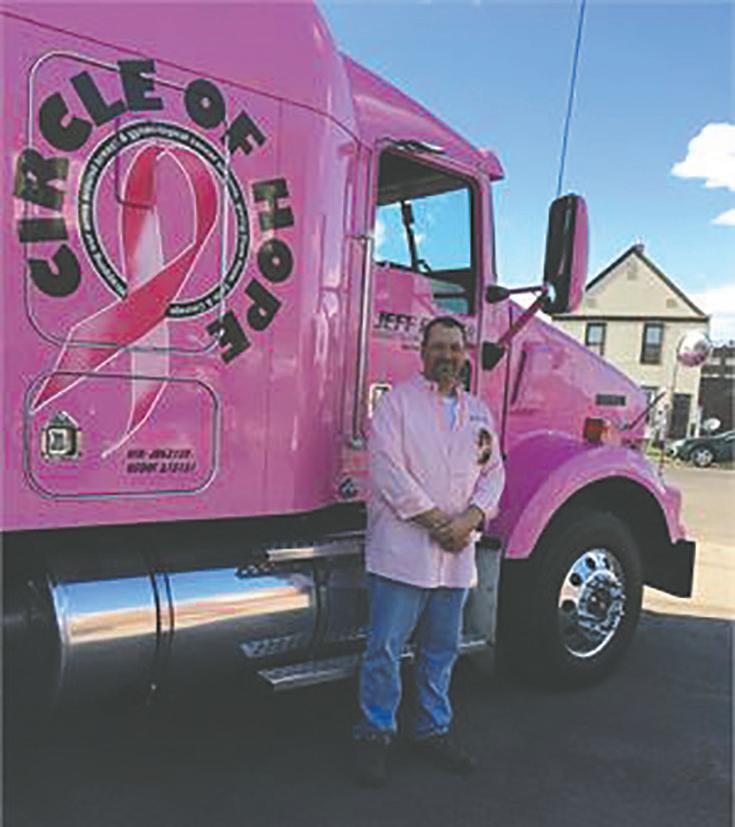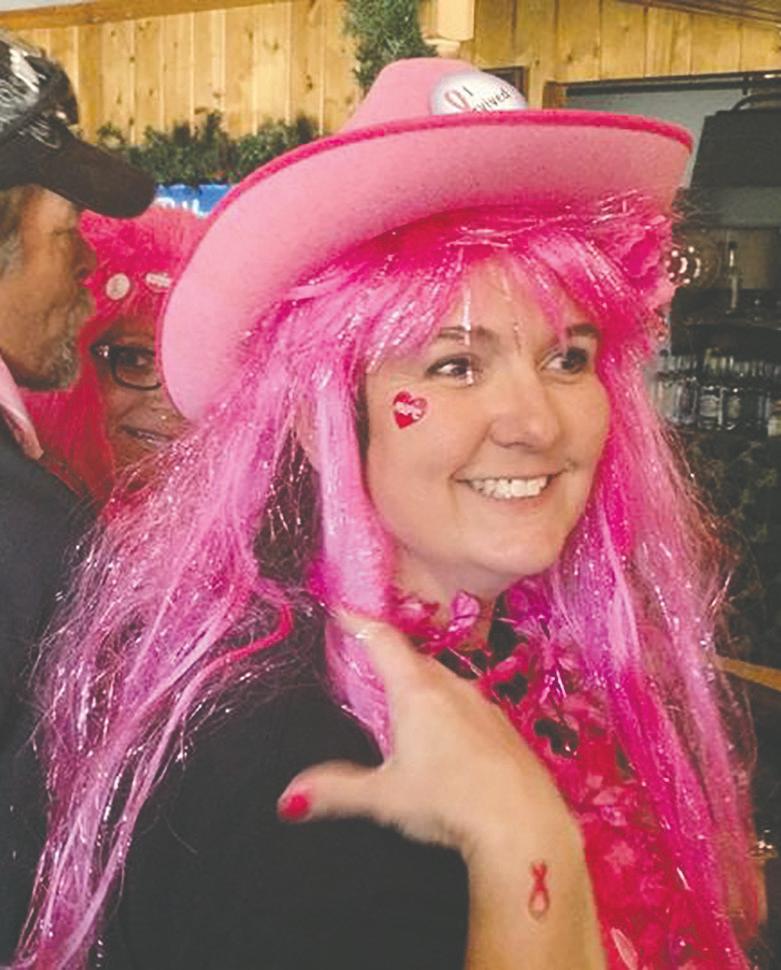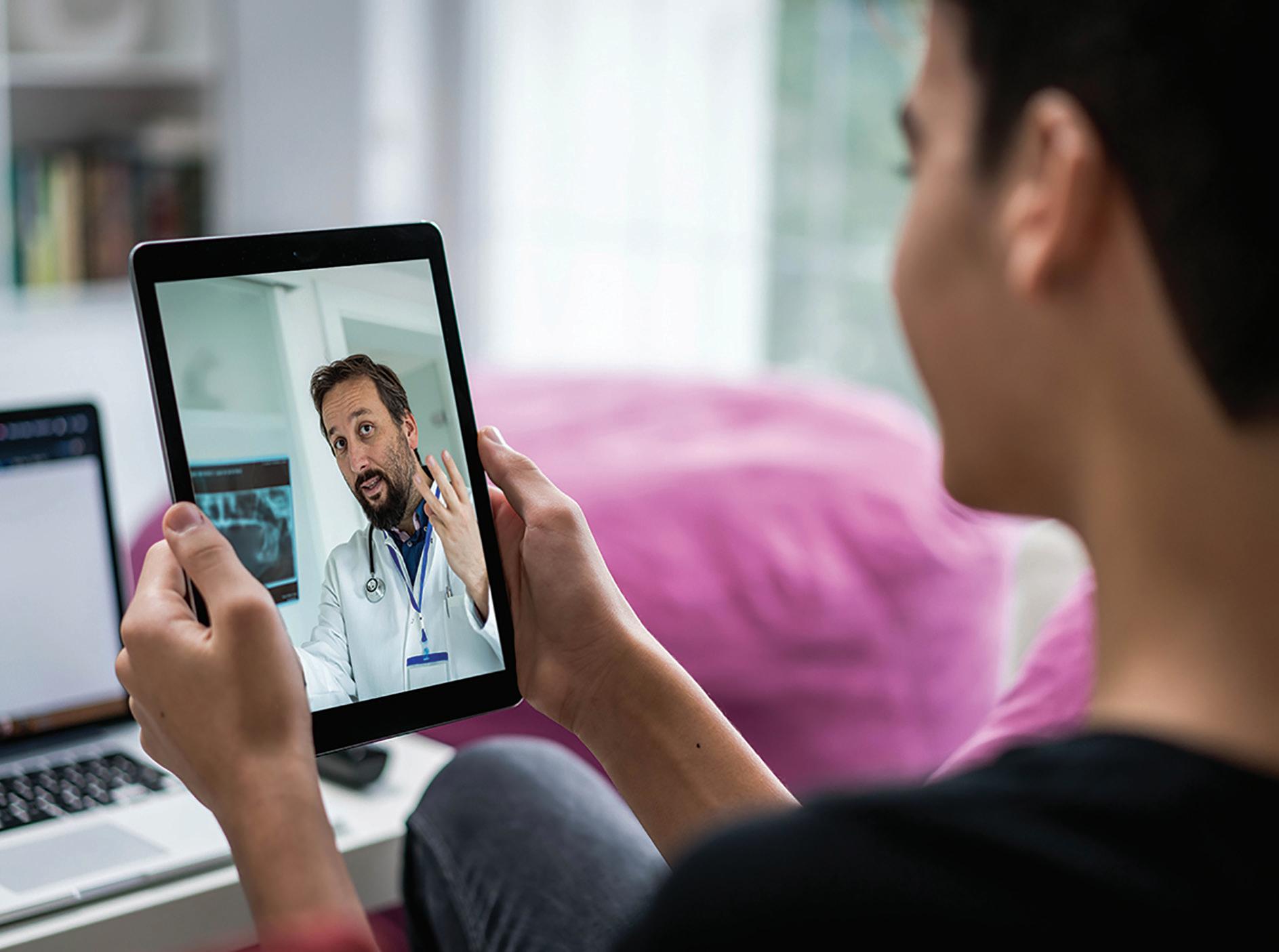
4 minute read
Circle of Hope founders proud of organization’s 11-year impact
By Andrea Busche
After 11 years, Duluthbased Circle of Hope — a nonprofit organization providing outreach, emotional support, supplies and even financial support for individuals fighting breast cancer in northern Minnesota and Wisconsin — has closed its doors.
Co-founder Peggy Anderson of Duluth, a 17-year breast cancer survivor, shared that on Sept. 15, Circle of Hope officially closed, largely due to issues related to health and aging affecting the group’s leadership. But looking back, Anderson is incredibly proud of all the group has accomplished.
“The most rewarding thing has been working with the patients,” Anderson said. “My happiest stories are of the patients who are still doing well — the survivors.”
Anderson estimates that Circle of Hope has served 200-300 patients per year, for the last 11 years.
Early Days
Back in 2010, Anderson and two of her friends, Peggy Rydberg and Tammy Graves Miller, battled the illness together. Together they learned, first-hand, of the many struggles breast cancer can present in a patient’s life. The women wanted to do something to help others. In 2010, they formed Circle of Hope.

After 11 years of serving others, Anderson reflected on Circle of Hope’s legacy. She shared some statistics regarding the many lives the group has touched, as well as resources for the newly diagnosed.
Outreach
While Circle of Hope didn’t offer formal support groups, Anderson often met one-on-one with breast cancer patients to simply visit, and discuss their diagnosis.

“We’ve found that helping patients soon after their diagnosis is important,” she said.
Receiving emotional support from someone who has “been there” can do wonders for helping someone feel understood. “Sometimes they just want to talk to someone,” Anderson added.
Statistics
In addition to offering outreach, Circle of Hope has also supported breast cancer patients by sending out feel-good and educational boxes containing chemo caps, slippers and educational and disease-specific resources. Special quilts and prayer shawls were also provided.
Many of these special items were handcrafted by some of Circle of Hope’s several hundred volunteers.
“We have given out 7,100 chemo caps to local hospitals — 998 of which were made by one volunteer, Lois Stone of Two Harbors,” Anderson explained. Circle of Hope also offered free goody bags for breast and ovarian cancer patients once per year at Heide’s Mastectomy and Compression.
Financial Support
If there’s one thing Anderson has learned throughout her journey, it is that breast cancer doesn’t discriminate. Some patients are homeless and have no health insurance. Others have insurance, but struggle to pay the co-pays associated with their illness. Some patients even have to quit work to receive treatment.
Looking back, Circle of Hope is proud to share that they have given $607,000 to help breast cancer patients in Minnesota and Wisconsin. The organization raised money through a variety of fundraising efforts, including the Rally for Circle of Hope, held annually at Ridgeview Country Club; the Pink Run, held in Gordon, Wisconsin; and by forming a team of runners to participate as a charity partner for Grandma’s Marathon.
Circle Of Hope
From page 5
The group has participated in Superior’s Dragon Boat races, and has had golfing, bowling, ATV and many other activity-based fundraisers. Additionally, many individual and business donors have contributed to the cause.
While much of this money was shared with individual patients, some of the money went toward breast cancer research, too.
“We gave $3,000 to the National Breast Cancer Coalition to research a vaccine to be given to young girls so they don’t get breast cancer,” Anderson said.

Another $65,000 was given to
Telehealth
From page 3
Though cancer screenings typically typically must be conducted in person, the decline in screenings suggests patients were not speaking with their physicians during the early months of the pandemic. Had patients been more willing to speak with their physicians over the phone or via video conferencing apps like Zoom, the decline in cancer screenings likely would not have been so significant, as doctors would have emphasized the importance of screenings, even during a pandemic.
Telehealth appointments can be valuable for anyone, and patients can take steps to ensure their telemedicine sessions with their physicians are as productive as possible.

Write Down Questions
Prior to an appointment, patients can write down any questions they have for their physicians. This helps ensure nothing is forgotten during the appointment. Writing down questions is especially
UMD’s Medical School for metastatic breast cancer research.
Looking Forward
Now that Circle of Hope has closed its doors, Anderson offered a couple of tips for those looking for support. First, consult your healthcare provider. They can often point patients toward a variety of resources. She also recommended speaking to a social worker or nurse navigator.
Anderson also speaks highly of the St. Luke’s Breast Cancer Support Group, facilitated by Tina Roberts.
“I’ve known Tina for many years — she really cares about the patients,” Anderson said.
But it all starts with being aware of any changes in your body.
“Get an annual mammogram,” Anderson said. “And always know your own body, so you can recognize any changes. Be your own best advocate.”
Gratitude
For the last 11 years, Circle of Hope has been a beacon of light for patients struggling with the frightening diagnosis of breast cancer.
“I feel enriched and blessed for all the patients we’ve known, and sad for those we’ve lost,” Anderson said. “I have so many good memories, and I’m really grateful for this experience.” important for telehealth appointments, as it can be easy to be distracted when calling in from home.
Keep A Health Diary
A health diary can help patients point to symptoms or other persistent issues they’ve faced in the weeks or months leading up to their telehealth appointments. Jot down everything from the severity and frequency of symptoms to fluctuations in weight to any reactions to medications. No detail is too minor, as the more informed patients are the more fruitful their discussions with physicians can be.
Photograph Any Extraordinary Symptoms
Physical examinations are vital components of preventive health regimens, but many people have delayed or skipped annual physicals during the pandemic. If any unusual symptoms or issues like rashes arise, document them by taking photos and measure the size of any lumps. Any symptoms should be reported to a physician immediately, but documentation like photographs can ensure nothing is lost in translation during telehealth appointments.









